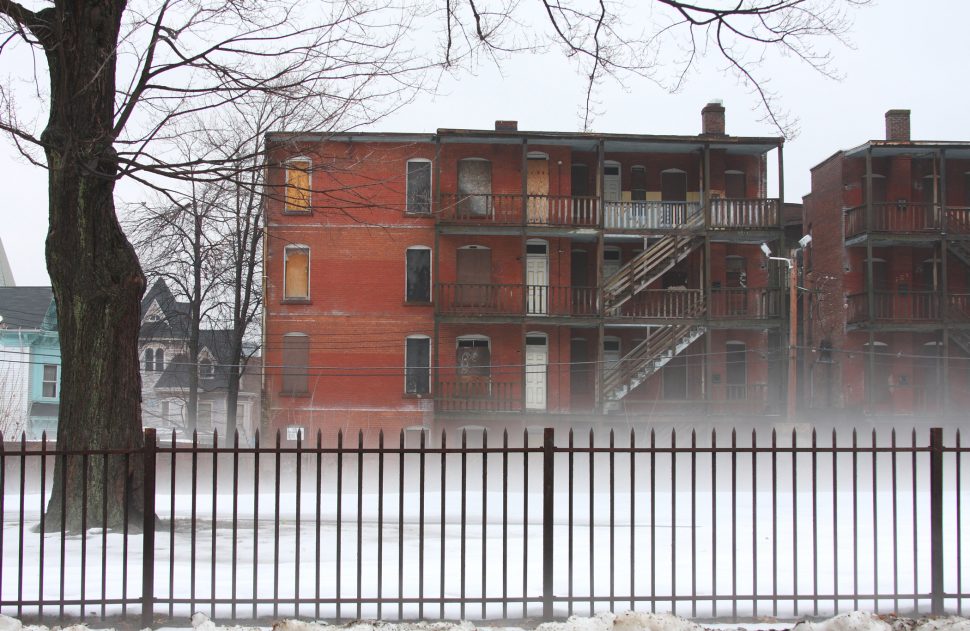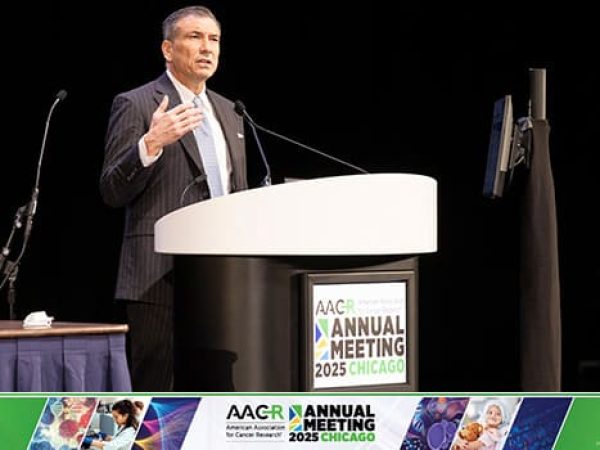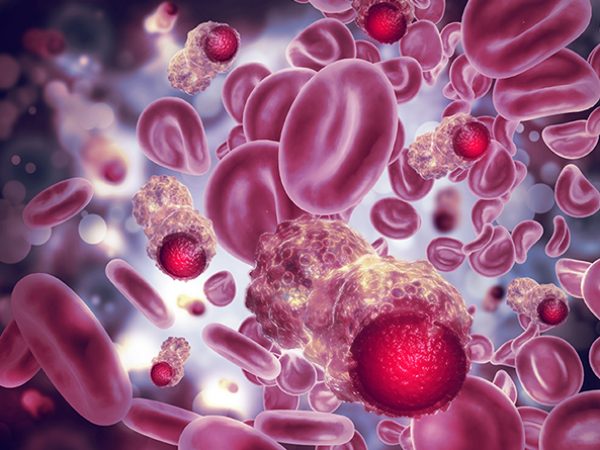AACR COVID-19 and Cancer Virtual Meeting: Disparities During the Pandemic
At the American Association for Cancer Research (AACR), we know that our mission to prevent and cure all cancers must encompass all of society. Disparities are a pervasive problem in cancer health, leading to poorer outcomes for many racial and ethnic minorities, as well as other underserved groups.
Sadly, these underserved groups are also experiencing more severe ramifications of the COVID-19 pandemic. Black, Indigenous, and Hispanic Americans are more likely to be infected with COVID-19, and more likely to die of the disease.
At a session at the AACR Virtual Meeting: COVID-19 and Cancer, held July 20-22, researchers discussed a wide range of emerging research on how minority groups are faring during the pandemic. Much like disparities in cancer, disparities in COVID-19 are multifactorial, with roots in societal problems that are now under increased scrutiny in America.
Session Chair Clayton C. Yates, PhD, of Tuskegee University in Tuskegee, Alabama, said, “As we are all experiencing this pandemic together, it’s critical for us to understand these disparities so that we can develop culturally sensitive tools as part of our effort to combat the disease.”
The root of COVID-19 disparities
The same socioeconomic factors that have contributed to cancer health disparities are at play in COVID-19, said John M. Carethers, MD, of the University of Michigan in Ann Arbor. He described a cascading effect in which poverty, for example, leads to poor nutrition, which leads to obesity and resulting health conditions like hypertension and cardiovascular disease. These conditions contribute to worse outcomes for patients with cancer, and they are having a similar effect on patients with COVID-19, he said.

“In many ways, socioeconomic disparities spark a COVID-19 vulnerability vicious cycle. They lead to long-term downstream consequences, influencing the food you eat, the air you breathe,” he said.
Carethers observed the poignancy of discussing disparities in COVID-19 in the midst of deeper discussions on race and inequality in the United States.
“COVID-19 has enhanced the visibility of some of the problems we have in the United States,” he said. “I don’t know if there’s a quick fix, but when the next pandemic comes in 10 or 20 years, I hope we’re in a better place than we are right now.”
A real-time tool for tracking COVID-19
Several months into the pandemic, researchers are still gleaning new information on how the virus is transmitted and how it affects the body. David A. Drew, of Massachusetts General Hospital and Harvard Medical School in Boston, discussed a new app that is rapidly collecting information from people experiencing symptoms of COVID-19.
The COVID Symptom Study was created by doctors and scientists at Massachusetts General Hospital, the Harvard T.H. Chan School of Public Health, King’s College London, and Stanford University School of Medicine, working with ZOE, a health science company. The free app allows people to log symptoms and receive daily reports about COVID-19 in their area. Researchers hope that monitoring symptoms will allow for early, accurate diagnosis of cases. Most recently, in a study that has not been peer-reviewed, researchers used data collected from the app to characterize six types of COVID-19 disease.
Drew noted that an app-based strategy for tracking disease may not fully reflect minorities and underrepresented groups. “If they have less access to smartphones, their experience may not be accurately reflected,” he said, adding that a Spanish-language version is in development, and the researchers are seeking partners in community settings.
Patients with cancer and COVID-19
Throughout the pandemic, researchers have sought to determine the effects of COVID-19 on patients with cancer. In general, death rates from COVID-19 appear to be as much as four times higher in patients with cancer compared with patients who do not have cancer. A pair of studies discussed during this session sought to characterize variations in death rates across racial and ethnic groups.
Steven S. Chang, MD, of the Henry Ford Cancer Institute in Detroit, noted that Black patients with cancer were more likely than whites to be hospitalized due to COVID-19. However, Chang and Carethers both noted that once patients are in the hospital, the disparity in death rate begins to narrow. The researchers said this indicates that Black patients are experiencing more severe COVID infection, but once hospitalized, they have strong chances of recovering.
Saoirse Dolly, MBBS, PhD, of Guy’s and St Thomas’ NHS Foundation Trust and Kings Health Partners in London, discussed a study that examined the risk of death from COVID-19 among patients treated at a large cancer center in the United Kingdom. The study subjects were mostly white and of British ethnicity, limiting the ability to draw broad conclusions about race and ethnicity. However, Dolly noted some interesting findings based on the severity of the patients’ cancer.
The patients most likely to die of COVID-19 were those who had been on a palliative regimen of cancer treatment rather than a curative regimen. Also, those who had been diagnosed with cancer two or more years prior to the study were the most likely to die. Dolly said the study’s findings suggest that a long-term diagnosis of cancer may influence the severity of COVID-19 infection.
Unemployment, cancer screening, and COVID-19
The COVID-19 pandemic has precipitated a steep rise in unemployment, leaving more and more Americans without insurance. In the United States, the unemployment rate for June 2020 was 11.1 percent, down from a peak in April, but dramatically higher than the 4 percent unemployment rate recorded through much of 2019.
Stacey Fedewa, PhD, of the American Cancer Society in Atlanta, discussed how the loss of insurance is likely to lead to lower rates of screening for many cancer types. She cited the recent prediction of National Cancer Institute Director Ned Sharpless, MD, that 10,000 excess deaths will occur over the next decade due to reduced screening for breast and colorectal cancer.
Fedewa shared a recent study, conducted prior to the pandemic, that examined screening rates for unemployed Americans. In that study, Fedewa said, about 40 percent of the unemployed respondents were uninsured, compared with 10 percent of those currently working. The unemployed respondents were more likely to be Hispanic or black.
Unsurprisingly, breast cancer screening rates were about 12 percent lower in the unemployed compared with the employed.
“This is a reminder of the challenges we have in the United States with lack of universal health coverage,” Fedewa said. When Yates asked what might be done to improve the problem, Fedewa noted that states should sign on to the Medicaid expansion program legislated by the Affordable Care Act in 2014.
“We can buffer the effects of unemployment by making sure people can stay insured,” she said.
COVID-19 in the Indigenous tribal nations
Native American/American Indian communities have been hotspots for COVID-19. By early summer, tribal communities in Arizona and New Mexico were reporting the fastest-growing infection rates in the world, said Cheryl L. Willman, MD, of the University of New Mexico Comprehensive Cancer Center in Albuquerque. At the time of her talk, the infection rate was 14 times higher in the tribal population than in New Mexico’s general population, and the death rate was 19 times higher.
The disproportionate toll from COVID-19 is due in large part to poverty, as well as cultural issues, such as a preference for clustered housing that has allowed the virus to spread quickly. Willman said longtime conflicts between the Native American tribes and the U.S. government have exacerbated poverty and left the tribal populations without sufficient access to health care.
“If we truly intend to overcome health disparities, we cannot ignore the fundamental contribution of these societal, economic, cultural and political factors,” she said.



